Tag: Army of Northern Virginia
Wikipedia says: The Army of Northern Virginia was the primary military force of the Confederate States of America in the Eastern Theater of the American Civil War. It was also the primary command structure of the Department of Northern Virginia. It was most often arrayed against the Union Army of the Potomac.
The name Army of Northern Virginia referred to its primary area of operation, as did most Confederate States Army names. The Army originated as the Army of the Potomac, which was organized on June 20, 1861, from all operational forces in northern Virginia. On July 20 and July 21, the Army of the Shenandoah and forces from the District of Harpers Ferry were added. Units from the Army of the Northwest were merged into the Army of the Potomac between March 14 and May 17, 1862. The Army of the Potomac was renamed Army of Northern Virginia on March 14. The Army of the Peninsula was merged into it on April 12, 1862.
Robert E. Lee’s biographer, Douglas S. Freeman, asserts that the army received its final name from Lee when he issued orders assuming command on June 1, 1862. However, Freeman does admit that Lee corresponded with Joseph E. Johnston, his predecessor in army command, prior to that date and referred to Johnston’s command as the Army of Northern Virginia. Part of the confusion results from the fact that Johnston commanded the Department of Northern Virginia (as of October 22, 1861) and the name Army of Northern Virginia can be seen as an informal consequence of its parent department’s name. Jefferson Davis and Johnston did not adopt the name, but it is clear that the organization of units as of March 14 was the same organization that Lee received on June 1, and thus it is generally referred to today as the Army of Northern Virginia, even if that is correct only in retrospect.
In addition to Virginians, it included regiments from all over the Confederacy, some from as far away as Georgia, Texas and Arkansas. One of the most well known was the Texas Brigade, made up of the 1st, 4th, and 5th Texas, and the 3rd Arkansas, which distinguished themselves in numerous battles, such as during their fight for the Devil’s Den at the Battle of Gettysburg.
Command under Brigadier General P. G. T. Beauregard
The first commander of the Army of Northern Virginia was General P. G. T. Beauregard (under its previous name, the Confederate Army of the Potomac) from June 20 to July 20, 1861. His forces consisted of six brigades, with various militia and artillery from the former Department of Alexandria. During his command, Gen. Beauregard is noted for creating the battle flag of the army, which came to be the primary battle flag for all corps and forces under the Army of Northern Virginia. The flag was designed due to confusion during battle between the Confederate “Stars and Bars” flag and the flag of the United States. Beauregard continued commanding these troops as the new First Corps under Gen. J. E. Johnston as it was joined by the Army of the Shenandoah on July 20, 1861, when command was relinquished to General J. E. Johnston. The following day this army fought its first major engagement in the First Battle of Manassas.
Command under General J. E. Johnston
With the merging of the Army of the Shenandoah, Gen. Joseph E. Johnston took command from July 20, 1861, until May 31, 1862.
Corps organization under Johnston 1861
First Corps – commanded by General P.G.T. Beauregard
Second Corps – commanded by Maj. Gen. G. W. Smith
Wing organization under Johnston 1862
Left Wing – commanded by Maj. Gen. D. H. Hill
Center Wing – commanded by Maj. Gen. James Longstreet
Right Wing – commanded by Maj. Gen. John B. Magruder
Reserve – commanded by Maj. Gen. G. W. Smith
Under the command of Johnston, the Army immediately entered into the First Battle of Manassas. On October 22, 1861, the Department of Northern Virginia was officially created, officially ending the Army of the Potomac. The department comprised three districts: Aquia District, Potomac District, and the Valley District. In April 1862, the department was expanded to include the Departments of Norfolk and the Peninsula (of Virginia). Gen. Johnston was eventually forced into maneuvering the Army southward to the defenses of Richmond during the opening of the Peninsula Campaign, where it conducted delay and defend tactics until Johnston was severely wounded at the Battle of Seven Pines.
During the months after the First Battle of Bull Run, Johnston organized his Shenandoah Army and Beauregard’s Potomac Army into two divisions under a unified command with Gustavus Smith and James Longstreet as division commanders. Beauregard quarreled with Johnston and was transferred to the Western theater over the winter months. Jackson was sent to the Shenandoah Valley in October 1861, initially with his own old Stonewall Brigade and later with two other brigades from Western Virginia. Several newly arrived brigades were added to Johnston’s army in late 1861-early 1862.
When the Peninsula Campaign began, Johnston took his army down to the Richmond environs where it was merged with several smaller Confederate commands, including a division led by D.H. Hill as well as Benjamin Huger’s Department of Norfolk, John Magruder’s Army of the Peninsula, and miscellaneous brigades and regiments pulled from various Southern states. Richard Ewell was elevated to division command in the spring of 1862 and sent to join Jackson in the Valley.
On May 27, an additional new division was created and led by A.P. Hill consisting of several new brigades from the Carolinas, Georgia, and Virginia, soon augmented with James Archer’s brigade from Smith’s division. At Seven Pines, Longstreet and Smith served as temporary wing commanders, and operational control of their divisions went to Brig. Gen William H.C. Whiting and Brig. Gen Richard H. Anderson.
Temporary command under Major General G. W. Smith
Maj. Gen. Gustavus Woodson Smith commanded the ANV on May 31, 1862, following the wounding of Gen. J. E. Johnston during the Battle of Seven Pines. With Smith seemingly having a nervous breakdown, President Jefferson Davis drafted orders to place Gen. Robert E. Lee in command the following day.
Command under General R. E. Lee
On June 1, 1862, its final and most famous leader, General Robert E. Lee, took command after Johnston was wounded and Smith suffered what may have been a nervous breakdown at the Battle of Seven Pines. William Whiting received permanent command of Smith’s division, while Richard Anderson reverted to brigade command. Longstreet served as a wing commander for part of the Seven Days Battles and Anderson had operational command of the division at Glendale.
The cavalry, organized into a division on August 17, 1862, and into a corps on September 9, 1863, was commanded by Maj. Gen. J.E.B. Stuart until May 11, 1864 (the day he was mortally wounded). The cavalry corps was then temporarily split into divisions, but was merged again on August 11, 1864, under command of Lt. Gen. Wade Hampton III. The Reserve Artillery was commanded by Brig. Gen. William N. Pendleton for most of the war.
During the Seven Days Battles, Lee had eleven separate divisions under his command. Aside from the original core army that had been led by Johnston, there were assorted other commands from the Richmond area and North Carolina, as well as Jackson’s Valley Army. The inexperience and poor coordination of the army led to the failure of Lee’s plans to destroy the Army of the Potomac. As soon as the Seven Days Battles were over, Lee reorganized his army into two corps commanded by Jackson and Longstreet. He removed several generals who had turned in a less-than-inspiring performance in the Seven Days Battles, including John Magruder and Benjamin Huger.
Jackson had five divisions, the commands of A.P. Hill, Ewell, D.H. Hill, and Winder. Longstreet had six divisions commanded by Richard Anderson (formerly Benjamin Huger’s division), Cadmus M. Wilcox, James L. Kemper (each commanding half of Longstreet’s former division), John Bell Hood (formerly William Whiting’s division), David Rumph Jones, and Lafayette McLaws. D.H. Hill’s and McLaws’s divisions were left behind in the Richmond area and did not participate in the Northern Virginia campaign. The army was also joined for the Northern Virginia and Maryland Campaigns by Nathan G. Evans’s independent South Carolina brigade and a North Carolina brigade led by Brig. Gen Thomas Drayton.
During the Maryland Campaign, D.H. Hill rejoined the main army along with Lafayette McLaws. Kemper’s division was merged with the division of David R. Jones, a more senior, experienced officer, and Kemper reverted to brigade command. In addition, Robert Ransom commanded two brigades from the Department of North Carolina. At Antietam, Longstreet commanded the divisions of Anderson, McLaws, Jones, Hood, and Ransom while Jackson had the divisions of John R. Jones, Alexander Lawton, A.P. Hill, and D.H. Hill.
The Northern Virginia and Maryland Campaigns still showed numerous defects in the organization and leadership of the Army of Northern Virginia, particularly the high rate of straggling and desertion during the invasion of Maryland. Lee had fewer than 40,000 men on the field at Antietam, the smallest his army would be until the Appomattox Campaign, and the battle was largely fought on autopilot with minimal involvement by the senior officers in the army.
During the Fredericksburg Campaign, Longstreet had the divisions of Anderson, Hood, McLaws, Ransom, and George Pickett, who had just returned to action after months of convalescence from a wound sustained at the Battle of Gaines’s Mill. Jackson had the divisions of D.H. Hill, A.P. Hill, Jubal Early, and Elisha Paxton. Robert Ransom’s division returned to North Carolina after Fredericksburg. D.H. Hill also departed after quarreling with Lee.
In the Chancellorsville Campaign, Longstreet was sent with Pickett and Hood to the Richmond area. His other two divisions remained with the main army; they were directly commanded by Lee during this time. Robert Rodes took over D.H. Hill’s division. Jackson was mortally wounded during the Battle of Chancellorsville. Afterwards, Lee divided the army into three corps with three divisions each. Longstreet got the divisions of Pickett, McLaws, and Hood; A.P. Hill got the divisions of Harry Heth, William D. Pender, and Richard Anderson; and Richard Ewell (returning to action after almost a year of recovering from the loss of a leg at Second Bull Run) got the divisions of Robert Rodes, Jubal Early, and Edward “Allegheny” Johnson. A Fourth Corps, under Lt. Gen. Richard H. Anderson, was organized on October 19, 1864; on April 8, 1865, it was merged into the Second Corps. The commanders of the first three corps changed frequently in 1864 and 1865.
By the time of the Pennsylvania invasion, Lee had fixed the organizational defects that plagued the army during its early campaigns and the straggling problems of the Maryland Campaign did not repeat themselves.
After taking over command in mid-1862, Lee began preparing to lead the Army of Northern Virginia for the first time. However, his aggressiveness to attack the Union led to the loss of many troops especially at the Battle of Antietam, which ended up being a turning point in the war for the Union. After the costly victories during the Seven Days Battles and at Second Manassas in August 1862, Lee had now lost a total of 30,000 of his approximately 92,000 troops within three months of becoming the Confederate’s top general. Lee then planned to take his troops north into Maryland to destroy a critical railroad bridge across the Susquehanna River at Harrisburg in a letter written to President Davis. Lee even questioned his own plan, as he wrote, “I am aware that the movement is attended with much risk, yet I do not consider success impossible…” In addition, historians question Lee’s aggressiveness to move his army to Maryland. “There can be no sort of doubt that Lee underestimated the exhaustion of his army after Second Manassas. That is, in reality, the major criticism of the Maryland operation: he carried worn-out men across the Potomac.” His men were also underarmed and underfed, so the journey to Maryland added to the overall exhaustion. Once Lee arrived in Maryland and was preparing for Antietam, he made another controversial decision. Against the advice from General Longstreet and Jackson, Lee split his troops into four parts to attack the Union from different fronts. Clearly outnumbered and opposed to Lee’s plan, Longstreet stated, “General, I wish we could stand still and let the damned Yankees come to us!” As the fighting played out on September 17, 1862, known as the bloodiest single-day battle in American history, the battles at Dunker Church and Burnside’s Bridge proved to be too much for Lee and his Confederate army. Luckily for Lee, the arrival of A.P. Hill’s troops and the mixture of McClellan’s and Burnside’s sluggishness, saved Lee’s Army of Northern Virginia and allowed them to barely hold off the Union in Maryland.
Corps organization under Lee
Although the Army of Northern Virginia swelled and shrank over time, its units of organization consisted primarily of corps, earlier referred to as “wings” or “commands”:
First Corps (Longstreet’s Corps)
Second Corps (Jackson’s Corps in 1862/1863)
Third Corps (A.P. Hill’s Corps)
Fourth Corps (Anderson’s Corps)
Cavalry Corps
Showing all 14 results
-

Image ID: ACMN
$4.99 -

Image ID: AHKW
$2.99 – $4.99 This product has multiple variants. The options may be chosen on the product page -

Image ID: AMFZ
$6.99 -

Image ID: AMHT
$5.99 -

Image ID: AOTO
$7.99 -
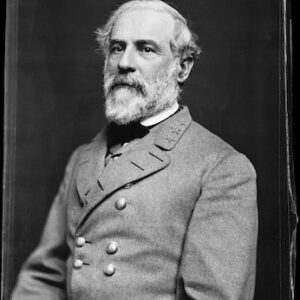
Image ID: APQD
$6.99 -
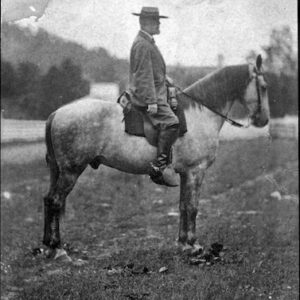
Image ID: AVSK
$4.99 -

Image ID: AXEC
$4.99 -

Image ID: AXTW
$3.99 -

Image ID: AXTX
$0.99 -
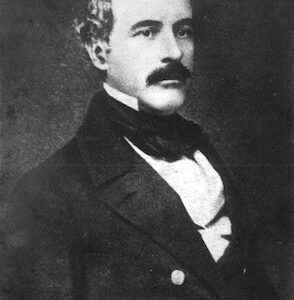
Image ID: AXTY
$0.99 -
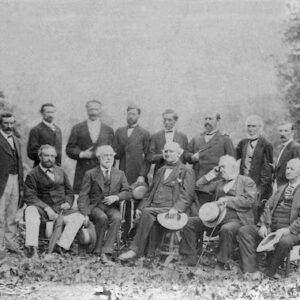
Image ID: AXTZ
$0.99 -
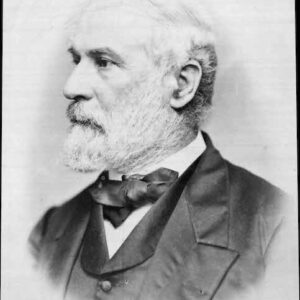
Image ID: AYBV
$0.99 -
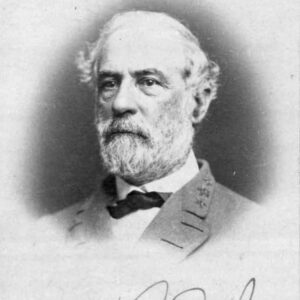
Image ID: AYBW